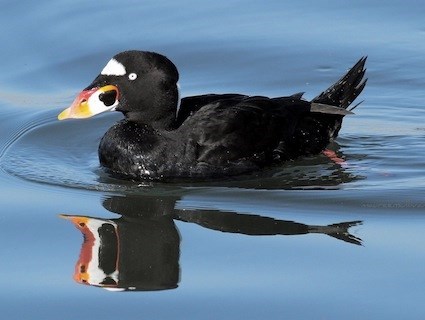The 39th Sunshine Coast Christmas Bird Count (CBC) was held on Saturday, Dec. 16. The count circle is centred in Roberts Creek and covers the area from Port Mellon to West Sechelt. Twenty-five observers in seven separate parties covered the area as completely as possible during the daylight hours. Weather conditions were calm with a thin overcast and a temperature range from 3.5 to 6.5C.
At day’s end a total of 88 species had been observed and another five species were added in the three days before and after Count Day making a total of 93 species for Count Week. These are generally average numbers. The highest species total was 105 in 2009. Highlight species recorded were an orange-crowned warbler, a flock of common redpolls and a peregrine falcon.
The 27th Pender Harbour CBC was held on Wednesday, Dec. 20, with 34 participants in eight parties, of which three were boat based. The count was conducted in perfect weather with sunshine, clear skies and calm conditions. Temperatures ranged from -1 to 2.5C. A total of 83 species were observed, and 86 for Count Week, slightly above the long-term average for the count. Highlight species recorded were a flock of white-winged crossbills and a peregrine falcon.
The Christmas Bird Count began in the year 1900 and is often referred to as the oldest citizen-science event in North America. The enormous amount of data accumulated has provided a trove of information about the mid-winter bird population of the continent. We now have an almost 40-year database for the Sunshine Coast and this allows for an analysis of both past and present population trends for individual species.
There have been both winners and losers in the period. For example, bald eagles have increased and great blue herons have decreased, and there may be a causal relationship here as the eagles predate the nests of the herons. This year showed an uptick in heron numbers on both of the counts, so perhaps this is the start of some better news for the herons.
Very briefly, other highlights were the high number of surf scoters (about 6,000) with a particularly heavy concentration around the Skookumchuck. Our wintering hummingbird, Anna’s, continues to proliferate almost everywhere. On the downside, rock sandpipers are now a scarce wintering species with a maximum of three birds seen together this winter. This is also a low year for pine siskins, but this is a well-known irruptive species and they will be back. House sparrows have declined very significantly since the 1990s but this is generally considered an unwelcome introduced species with negative impacts on some native birds so there is little concern there.
To report your sightings or questions, contact [email protected] or 604-885-5539.
Good birding.



